Articles
"That's the beauty of this global exhibition: Muslim women are speaking in their own voices/through their own artwork to address their personal passions, to tell their personal stories, to express themselves." (Samina Ali)
Apr 03, 2013
"If we consider Islamic art as a glorious present from Islamic culture to human culture, we see that crafts are in fact its actual translation. They are an expression of beauty that has tried and is still trying to contribute various images of creativity that lead to the enrichment of the Islamic cultural heritage." (Dr. Nazeih Taleb Maarouf)
Feb 26, 2013
“The museum seems to surprise people when they visit. The Dutch audience doesn't expect Saudi Arabians to make intelligent artwork. I think people are even scared of the country. In the media Saudi Arabia is bit like a dragon in a fairy tale.“ (Aarnout Helb)
Feb 14, 2013
"The repetitive calligraphy is a way to meditate like in Zikr or Tasbeeh on the names of Allah. I feel that the meaning of each word is absorbed in me while meditating on it. The layered calligraphic marks represent the intertwined lives of people of all backgrounds and nations and the similarities that exist all around the world among them creating a multicultural fabric." (Shafaq Ahmad)
Feb 08, 2013
We discussed the preservation of the Bosnian tradition of carpet weaving with an award-winning Bosnian artist Amila Smajovic who is currently working as an Assistant Professor for Visual Arts and Communication Design Department at the International University of Sarajevo.
Jan 28, 2013
“One's spiritual progress is definitely directly linked to one’s improvement in the art of calligraphy. It is a sacred art because it expresses mostly the words of the Holy Qur’an. It requires a great deal of patience and peacefulness within the heart. If the heart is restless or distracted, the outcome is sloppy... I find myself only doing well when I’m totally involved with mind, body and soul, otherwise the art will suffer.“ (Sana Naveed)
Jan 03, 2013
"My motivations are complex, even somewhat convoluted, but in a nutshell, I grew up in veiling cultures –both heavily Roman Catholic and Muslim– and thus know from experience that what the West perceives as the whys and wherefores of veiling –primarily oppressive, antiquated customs of the “Otherâ€â€“ are often distorted. I wanted to dispute those notions." (Jennifer Heath)
Dec 09, 2012
"My work usually starts from the joy and excitement of perceiving the essence of a spiritual poem or verse. This state of joy makes me like an instrument through which the artworks is being created. I am more like a witness enjoying the process and, of course, I enjoy the act of writing very much." (Mehrdad Shoghi)
Sep 27, 2012
"I see the material as part of a meditative process, cutting and breaking the glass and then reforming the tiny pieces into deliberately complex patterns. It simply is truly that- meditative and I am trying to see how many more possibilities there are with glass and mirror as medium." (Hayat Gul)
Sep 08, 2012
"The problem of mosques in the west – or specifically Europe – is identity; the majority of mosques are disguised inside any of a re-adapted warehouses, garages or empty buildings, even churches in some cases. The idea of a mosque in its commonly known shape (building + minaret and dome) is widely un-acceptable and refused, in some cases banned, and on the other part, there's no sign of tolerance from Muslims living here as they tend to insist on a certain image of mosques that are traditional but purely symbolic."
Sep 04, 2012
"I am trying to preserve the core values essential to graffiti that conditioned my approach to art: the spirit of calligraphy allied to movement that comes from the aerosol paint medium, the desacralization of art, taking it outside of the museum and making it public." (Vincent Abadie Hafez aka Zepha)
Aug 28, 2012
"My art is a reference to share the beauty, the divine mystery and an inner surface that expressing cosmic beauty heals the diseases of the soul." (Maimouna Patrizia Guerresi)
Aug 24, 2012
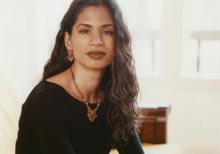
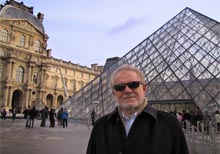

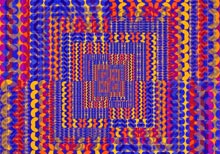
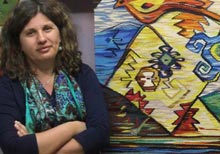
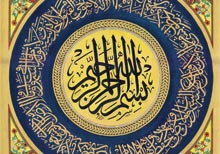
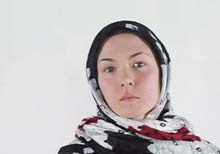
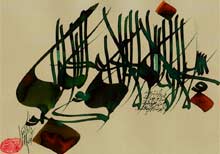
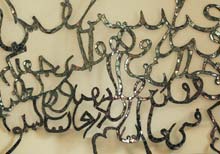
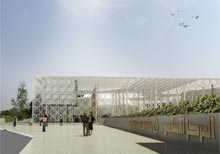
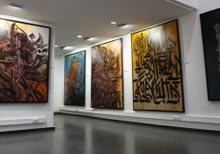
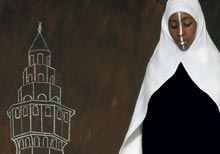
Stay in touch
Keep up to date with IAM's special offers, giveaways and news in your preferred format.